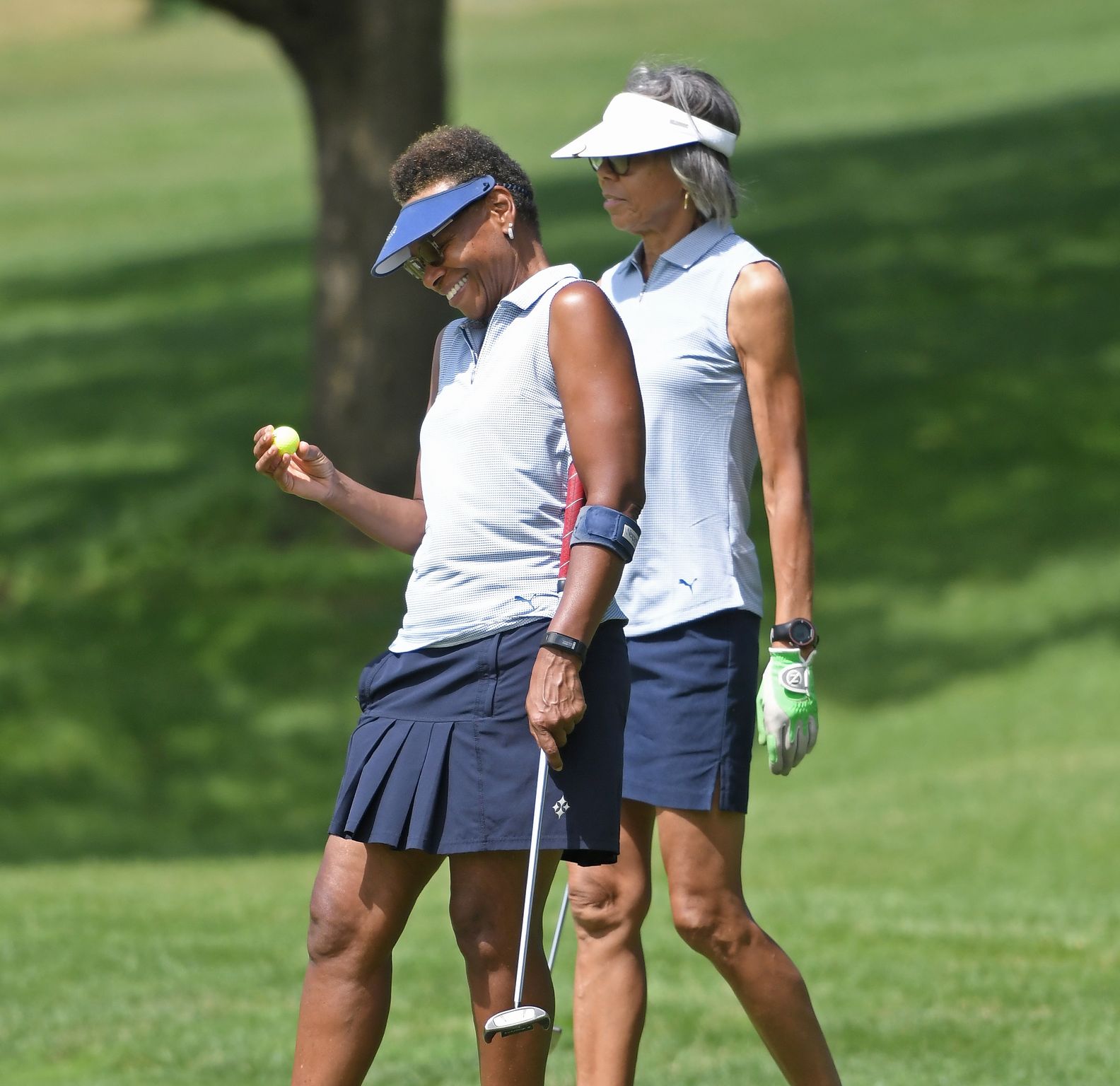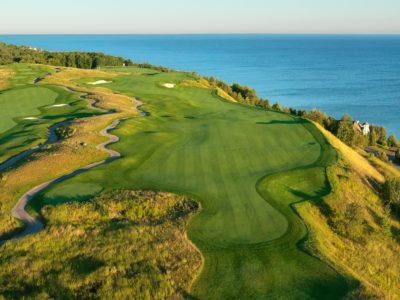By Janina Parrott Jacobs
As golfers age, there are normally two consequences: distance goes down and scores go up. Tee yardages mastered years ago are now out of range, and even the most forward set can still be formidable, making those birdies and pars less attainable.
The golf industry and course architects have made great strides in creating more playable designs, but age and gender factors relevant to yardage haven’t been completely solved, especially where senior women are concerned. Results show up most noticeably in handicaps.
Based on 2020 GHIN postings from the GAM, the average men’s score was 87 and the average women’s, 99, with senior women skewing higher. Given the minimum 12-stroke difference, does that signify men are better players than women or perhaps, for decades, women have been playing tees that are considerably too long?
Studying course statistics, 5400-5600 was common for women’s forward tees. In listening to all senior golfers, the need is apparent for shorter yardage. The PGA of America recommends 4,000-4,200 yards for players with swing speeds of 65mph (about 140 yard-drives), yet few facilities offer those rated yardages. Furthermore, according to the USGA, the longest par-4 a 21-26 handicap female can reach in two shots is 280 yards, which to most men, sounds short. However, if the average woman’s drive is 135-140 yards, even that isn’t feasible because her approach shot won’t reach the green.
According to the current USGA Handicapping and Course Rating system, all sets of tees are rated from four perspectives initially on driving distance assumptions: female ‘scratch’ players at 210 yards, ‘bogey’ at 150 and male ‘scratch’ at 250, with ‘bogey’ golfers at 200 yards. However, nowhere is there any provision for age.
It’s possible that the current handicapping system isn’t equitable toward seniors, many whose only real flaw is lack of distance. Using proper teeing areas helps but what happens when one is ridiculed for moving up to a more manageable ‘senior’ distance….something even golf legend Jack Nicklaus advocates? Obviously, there are also social issues to overcome.
“I’m just a 90’s shooter now….” said former collegiate golfer Anthony P., who shot mid-70’s during his competitive days. “I can’t reach greens but my playing buddies object if I move forward.” Rotator cuff surgery further curbed Anthony’s mobility, and distance faded significantly. Still fit at age 67, with a 14-handicap, he continues to play his home club at the ‘regular men’s’ yardage of 6500, about 900 yards too long for his 185-yard drives. Again, the only skill lacking is distance. If he used tees equal to his driving ability, single digits would probably return.
In fairness, Anthony’s club has multiple sets of rated tees and combos from which male members can play, ranging from 6950 to almost 5900. Yet, in Blue Tee tournament competition, there’s a requirement for moving up to the White tees: age and handicap must exceed 85. But who determined this formula, and is it equitable?
Bob Jones, almost 80 years old, catches forward-tee flak from his 50-something ‘spring chicken’ buddies. “They don’t understand why I need an ‘advantage’ because I have an OK short game.” Though Bob has to mosey up fairways hitting multiple 3-woods, when flat-bellies are lofting irons.
And what, exactly, constitutes a senior? 19th-hole talk offers no concrete answer. AARP claims you at 50. The LPGA’s Legends qualifying age is 45, while Champions Tour rookies are 50. GAM’s senior status is 55, with super seniors at 65….and women ‘legends’ at 70.
Bernie Friedrich, Senior Vice President Golf Operations and Resort Sales at Boyne Resorts addressed these issues years ago. “We started with four tees and now have six tee options at all our courses as of 2018. We encourage our guests to play from yardages they are used to and not the perceived colors that have been associated with both genders.
“Having six tees gives our guests the ability to play that “combo” tee option and have fun.” he added. “Four of our courses are between 4,100 and 4,500 yards from the Silver tees. And, we decreased our course watering by 50% in fairways so that the grass is firmer, which results in a golf ball going further. It’s a lot more fun to hit an 8-iron than a 4-iron and this gives players the chance to feel good about their game and not become discouraged.”
For avid women seniors who wish to post legal scores, options are scarce. They can play from the shortest forward tees to greens they cannot reach, and watch scores rise. Or they can play from junior or family tees, unrated for them, and not post those scores.
Washtenaw Golf Club in Ann Arbor had better ideas: After playing with his many students, Operating Partner and Michigan Golf Hall of Fame member Dave Kendall took action.
“It became evident the most forward tees were too long to provide a pleasant experience for my players,” he said. “Moving them to the beginning of the fairway helps make the game more welcoming to all. As golf course operators, we should do everything we can to broaden the appeal of golf to as many as possible.”
Longtime MWGA member Lu Stockton agreed: “The shorter tees at Washtenaw make a huge difference for the average 20-handicap golfer. Knowing there is now a chance to hit the greens is motivating; a positive attitude is so important in the game of golf!”
Or, like Michigan Golf Hall of Famer and Super Senior Sara Wold, you can decide what ‘your’ par is at any course. “For me at the ‘old’ Washtenaw”, she laughed, “par was 84!”
An important question remains: Sir, madam, when you move up to shorter teeing grounds as they become available, are you prepared for your handicap to go…down?










